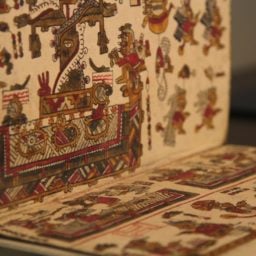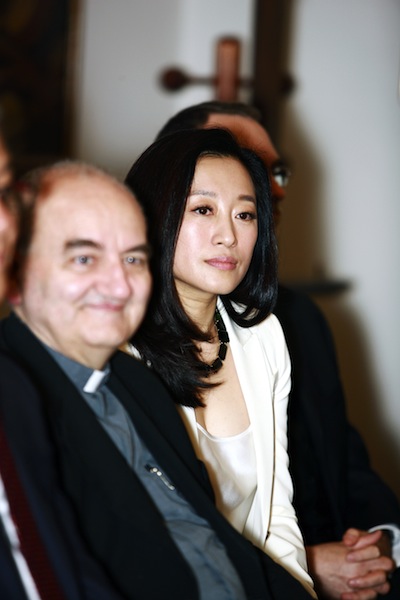
Popstar-turned-artist Ai Jing
Photo: Courtesy the artist
In her most recent exhibition, entitled “Dialogues,” musician-turned-artist Ai Jing embarks on a journey across mediums, techniques, art historical periods, and traditions. Set within the august interior of the Ambrosiana Gallery in Milan, the show examines—through paintings, sculptures, and installations—the possibility of dialogues existing between contemporary Chinese art and the Italian Renaissance.
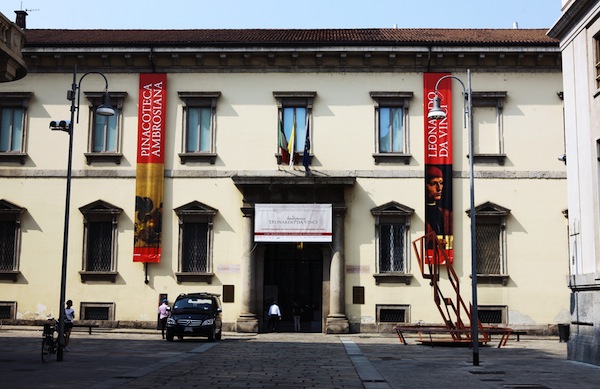
The Ambrosiana
Photo: Courtesy Ai Jing
The Ambrosiana is one of the oldest cultural institutions in Milan. Founded in 1618 by Cardinal Federico Borromeo, its holdings include a vast permanent collection of paintings, sculptures, etchings, and drawings donated by Borromeo himself, while the adjacent Biblioteca Ambrosiana contains over 115,000 manuscripts, including works by Homer, and some 1119 manuscripts by Leonardo da Vinci—most notably, the Codex Atlanticus.
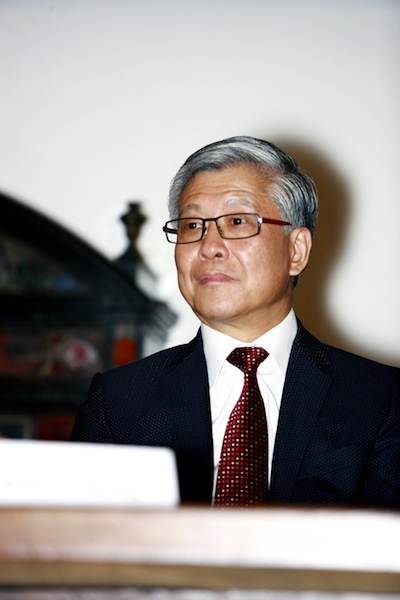
Curator Chen Lvsheng at the opening of “Dialogues”
Photo: Courtesy Ai Jing
This is the first contemporary exhibition ever to be held at the Ambrosiana, and Ai’s first solo show in the Western hemisphere, following solo shows in the National Art Museum of China (NAMOC) and the Art Museum of China in Shanghai (see Chinese Pop Star Blooms as Painter).
Curated by Chen Lvsheng, deputy director of the NAMOC, the impetus for showing contemporary Chinese art in this unconventional location was based on an invitation.
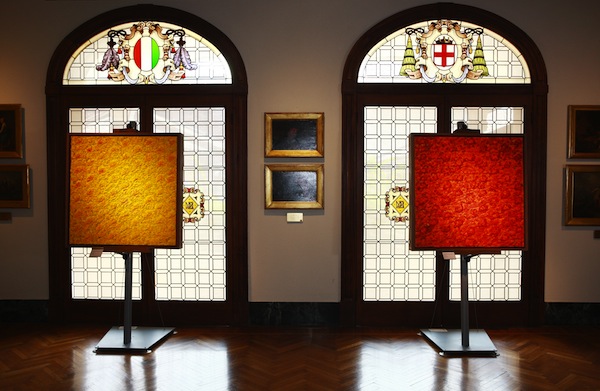
Ai Jing, Walking in the Sun (2015)
Photo: Courtesy the artist
In order to view her artworks, visitors must meander through several galleries, hallways, and floors, and are thus taken on a semi-directed journey that spans the museum’s different sections and the library, and offers exciting encounters between the permanent collection and Ai’s explorations of themes like technology, industrialized production, and nature.
Ai Jing’s work is uplifting, it appeals to spirituality, inspires emotions, and, more directly, carries the message of love—all of which are focal points that fit in with the museum’s existing narratives.
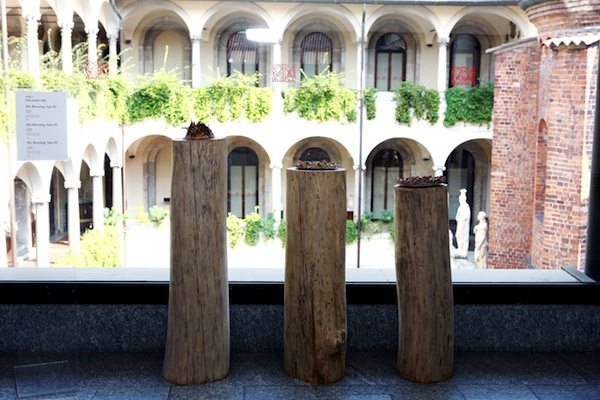
Ai Jing, My Burning Sun (2015)
Photo: Courtesy the artist
“For me, culture and religion are the two main themes worth exploring between East and West,” Ai Jing told artnet News after the opening. A somewhat literal presentation of this statement can be seen in the sculpture Ai Pray (2015), which depicts the artist’s hands pressed together in a gesture of prayer.
The simple yet potently symbolic work references the physical sign of religious devoutness, which is similar in both Christianity and Buddhism. Yet, it also references art history, from early iconography to Albretch Dürer, while the literal depiction of the artist’s disembodied hands imbues the work with a Po-Mo twist.
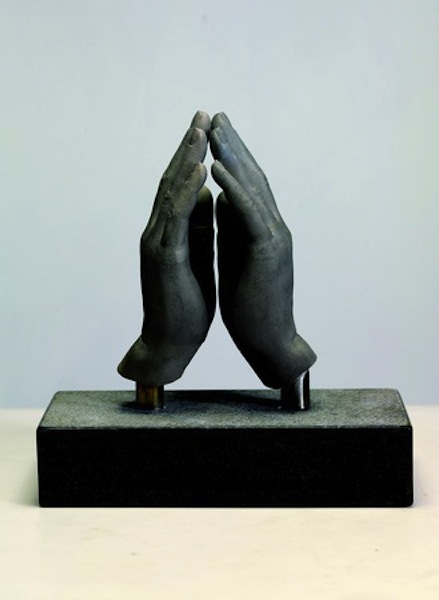
Ai Jing, Ai Pray (2015)
Photo: Courtesy the artist
The centerpiece of Ai’s exhibition is undoubtedly the sound installation To Da Vinci (2015). The work is a mechanical sculpture, a gigantic music box whose mechanism is exposed, its multiple gears spinning and turning to produce a bright and delightful sound.
The impressive sculptural piece is a tribute to da Vinci’s Portrait of a Musician, a painting that belongs to the Ambrosiana’s collection, which shows a young man holding a sheet of paper, with nearly illegible musical notes on it. Ai took the painting’s incomplete composition, deciphered it, and is now letting the melody resonate for the first time in history (see On Leonardo da Vinci’s Birthday MFA Boston Shows the Most Beautiful Drawing in the World and Bill Gates’s Rare Leonardo da Vinci Notebook Comes to Minneapolis Institute of Arts).
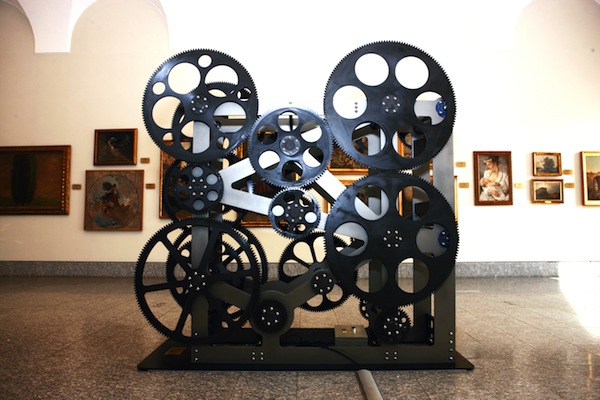
Ai Jing, To Da Vinci (2015)
Photo: Courtesy the artist
“When I saw da Vinci’s Musician, I wondered whether he had left a secret message through the composition. I asked myself: Why did he draw this melody? Why did he keep it incomplete?” Ai told artnet News.
The decision to translate the musical sheet into a large scale machine came naturally to her. Growing up in an industrial city in the north of China, Ai’s childhood was spent at the kindergarten of the machine factory where her father worked (see Discover Yiwu, China’s Christmas Village). “Machines are like my toys,” she explained. “I’m comfortable around them. And nowadays, I still play around with scale and design,” she revealed.
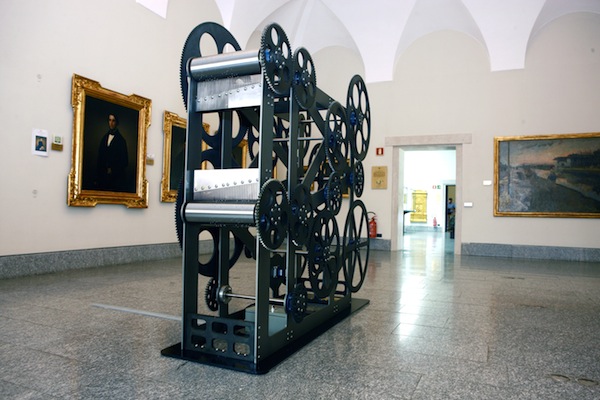
Ai Jing, To Da Vinci, (2015)
Photo: Courtesy the artist
Ai Jing, “Dialogues” is on view at the Ambrosiana Art Gallery of the Veneranda Biblioteca Ambrosiana, from June 5-September 5.










